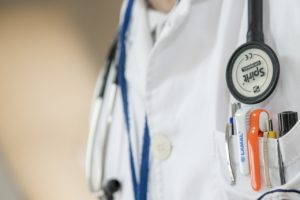 Afghan Wireless strongly believes in the power of connection and communication to help build a better Afghanistan. Not only does increased connectivity, and especially increased internet access, bring many vitally important economic benefits to developing nations like Afghanistan, it also offers a number of crucial social benefits.
Afghan Wireless strongly believes in the power of connection and communication to help build a better Afghanistan. Not only does increased connectivity, and especially increased internet access, bring many vitally important economic benefits to developing nations like Afghanistan, it also offers a number of crucial social benefits.
One of the most important benefits that developing economies experience as a result of improved internet access is better health care. For many people in developing nations, accessing basic health services can be a struggle. The result of this lack of access is disproportionately high rates of death and disease that could have been avoided with even very basic health care information and services.
Fortunately, internet access and mobile connectivity is helping to bridge this critical gap. Internet penetration rates are expanding into remote and rural areas of developing countries – for example, Afghan Wireless is proud to provide service to every one of Afghanistan’s 34 provinces.
As a result, mobile and internet technologies are helping patients and providers access important medical information and improve medical behaviors. Read on to learn more about three major ways that increased internet access is improving health care in developing economies.
-
Better internet access means more medical knowledge.
In developed or industrialized countries, the internet has become a central channel for health information that is widely used by patients and health care practitioners alike. The need for such information in developing economies is no different. Today, such information is much easier to come by thanks to online applications that provide timely and relevant health facts, services, and tools.
This has the overall effect of boosting general awareness and health literacy, both of which greatly help improve health outcomes. The fact that knowledge is one of the most important components of health was demonstrated in a study conducted in the UK.
The study indicated that people with a low level of health literacy can experience mortality risks that are up to 57 percent higher than people with high health literacy rates. These findings suggest that, if internet access was expanded to 75 percent of the population, over 2.5 million lives in developing countries could be saved simply by improving health literacy.
Naturally, increased medical knowledge is particularly important for people in remote or marginalized communities. For example, a study from India found that in rural villages with internet access, child mortality rates were 14 percent lower than in villages with no internet.
-
Better internet access means better treatment management.
In addition to improving general health knowledge, internet access can also help facilitate specific health activities and services such as dispensing and taking drugs and medications. Take, for example, diseases such as tuberculosis and HIV/AIDS, both of which pose significant health challenges in many developing economies.
 Proper adherence to treatment – in other words, taking the correct dose of the correct medication at the correct time – is a crucial factor in improving health and increasing life expectancy. However, such adherence can be very difficult for patients with low health literacy or limited access to health information.
Proper adherence to treatment – in other words, taking the correct dose of the correct medication at the correct time – is a crucial factor in improving health and increasing life expectancy. However, such adherence can be very difficult for patients with low health literacy or limited access to health information.
Mobile technology and internet access helps improve situations like this through specific applications and services designed to facilitate the management of particular conditions. For example, a number of eHealth or internet-based applications can help provide real-time reminders to patients about when to take their medication, and can record and track treatment compliance and any associated side effects.
Other applications geared towards health care providers can assist in managing the entire supply chain of the treatment. This ensures that drug stocks are kept at controlled levels in order to prevent medication shortages.
-
Better internet access means better access to services.
In developing countries, particularly in remote and rural regions, physical access to services can be challenging. Patients must often travel long distances in order to see a doctor or other health practitioner.
Additionally, health care providers can experience difficulties in sending tests or other patient health information to a hospital or lab for analysis. This means that many health conditions are not diagnosed or treated in time, or are wrongly diagnosed.
Internet access helps eliminate geographic barriers by allowing patients to connect remotely to health care workers. Health care workers can connect to more specialized experts and technical equipment. For example, video-conferencing services enable patients to speak to and provide visual information to health workers with neither person having to travel.
Video-conferencing can also allow health care practitioners treating a condition they are unfamiliar with to get real-time advice and instruction from specialists. Other innovations use mobile technology as a complement to basic medical equipment.
An initiative in Uganda, for instance, allows health workers to connect a camera phone to a microscope, take pictures of microscopic images, and transmit them to a central server. Specialized clinicians can then analyze the images and diagnose diseases like malaria or tuberculosis.

